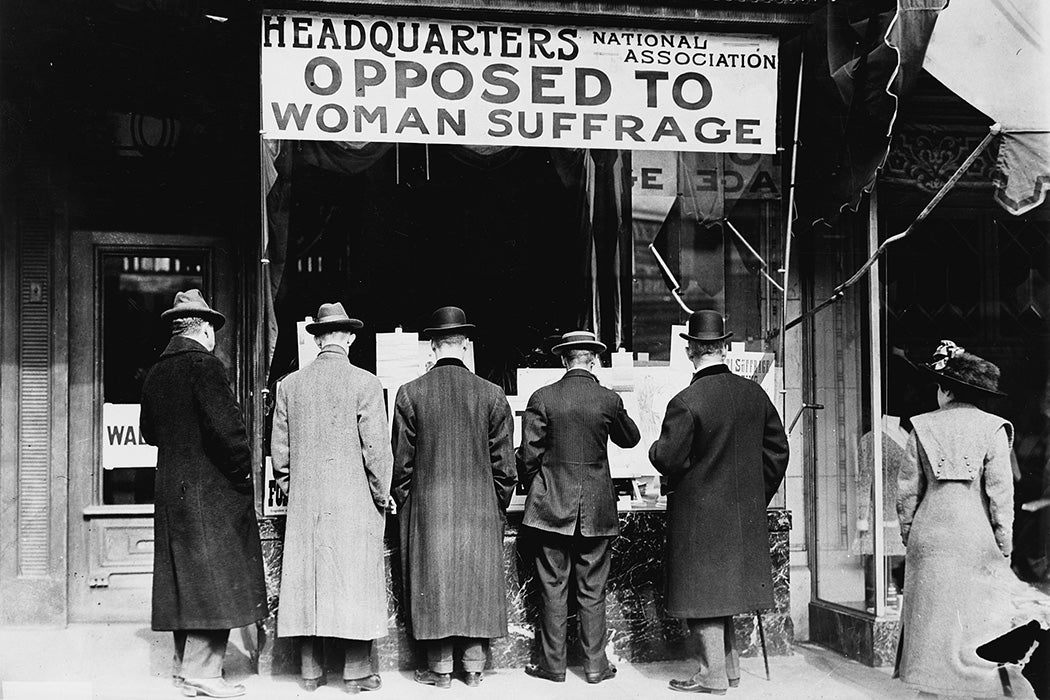Read a typical textbook account of the US women’s suffrage fight, and you might come away with the impression of a battle of the sexes. But, historian Joe C. Miller argues that that’s a serious distortion. In fact, not only was the campaign to give women the vote taken up by plenty of men, but there was widespread opposition to the cause among women.
Miller notes that suffragists frequently opposed referendums in which women would have the opportunity to vote on the issue, tacitly acknowledging that their cause would be unlikely to prevail. For example, in 1871, Susan B. Anthony said that women’s “condition of servitude” meant that they shouldn’t be polled in a proposed Washington State vote. Even at the time of the Nineteenth Amendment’s ratification in 1920, suffragist Carrie Chapman Catt wrote in a letter that only about a third of women supported suffrage, another third was opposed, and the rest didn’t care either way. (This wasn’t the message Catt sent to the public, though. Publicly, she claimed that most women wanted the vote.)
And it wasn’t just apolitical or conservative women who opposed suffrage. “Antis,” as they were sometimes known, included leaders in women’s education as well as prominent professional figures such as journalist Ida Tarbell. Among the most active was Josephine Dodge, an advocate for child care for working mothers. In 1911, Dodge and some allies formed the National Association Opposed to Woman Suffrage. The all-female organization peaked at about 500,000 members in 1919.
Why did women oppose suffrage? For some, Miller writes, it was part of a larger hostility to the expansion of the franchise to constituencies they saw as ignorant or liable to sell their votes, such as immigrants and Black Americans.
For others, becoming voters would undercut women’s power as moral authorities. Catharine Beecher, an advocate for women’s education and economic advancement, argued that women were most effective when they united to press their fathers, brothers, and husbands for reforms in terms that rose above dirty partisan politics. As evidence she pointed to her sister, Harriet Beecher Stowe, whose Uncle Tom’s Cabin had contributed to anti-slavery sentiment in the country. Another example was the women’s clubs that fought for pure food laws, compulsory schooling, and other reforms that were easily framed in terms of maternal care.
Weekly Newsletter
Some “antis” also warned that if women became more like men in their public roles it would threaten their existing “special privileges,” such as the right to be supported by their husbands or fathers, exemption from military service and jury duty, and first dibs on the lifeboats on a sinking ship.
Miller writes that the movement’s history that appears in today’s textbooks relies on accounts from certain suffragists who preferred to present it as a struggle by women for women. Others always saw it differently—like suffragist Alice Stone Blackwell, who described the fight as one “of broad-minded men and women on the one side against narrow-minded men and women on the other.”
Support JSTOR Daily! Join our new membership program on Patreon today.







